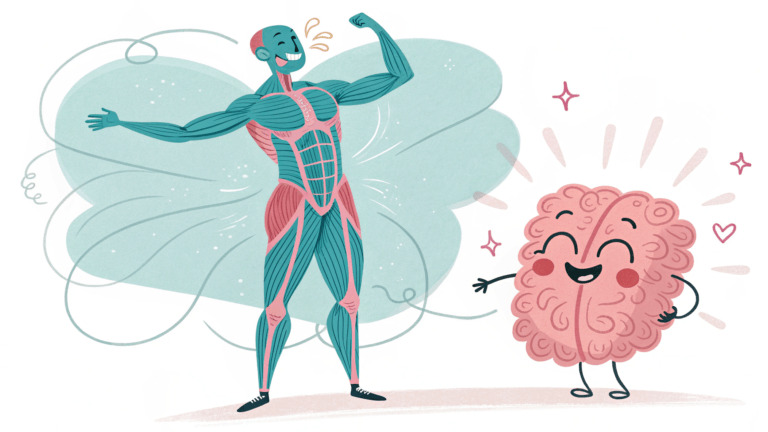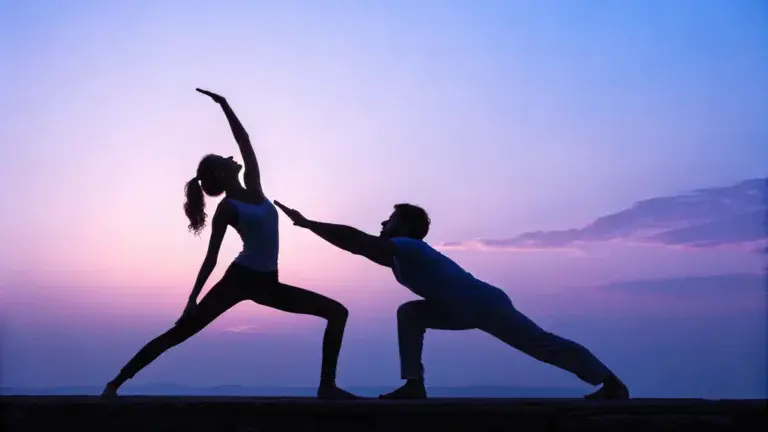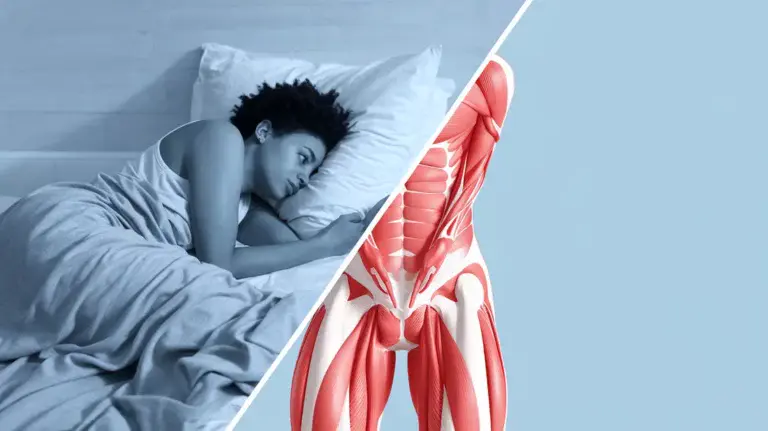Have you ever noticed a struggle to comfortably bend down and tie your shoes, or a nagging tightness in your lower back after sitting for extended periods?
These could be signs of tight hip flexors, those muscles at the front of your hip responsible for lifting your leg.
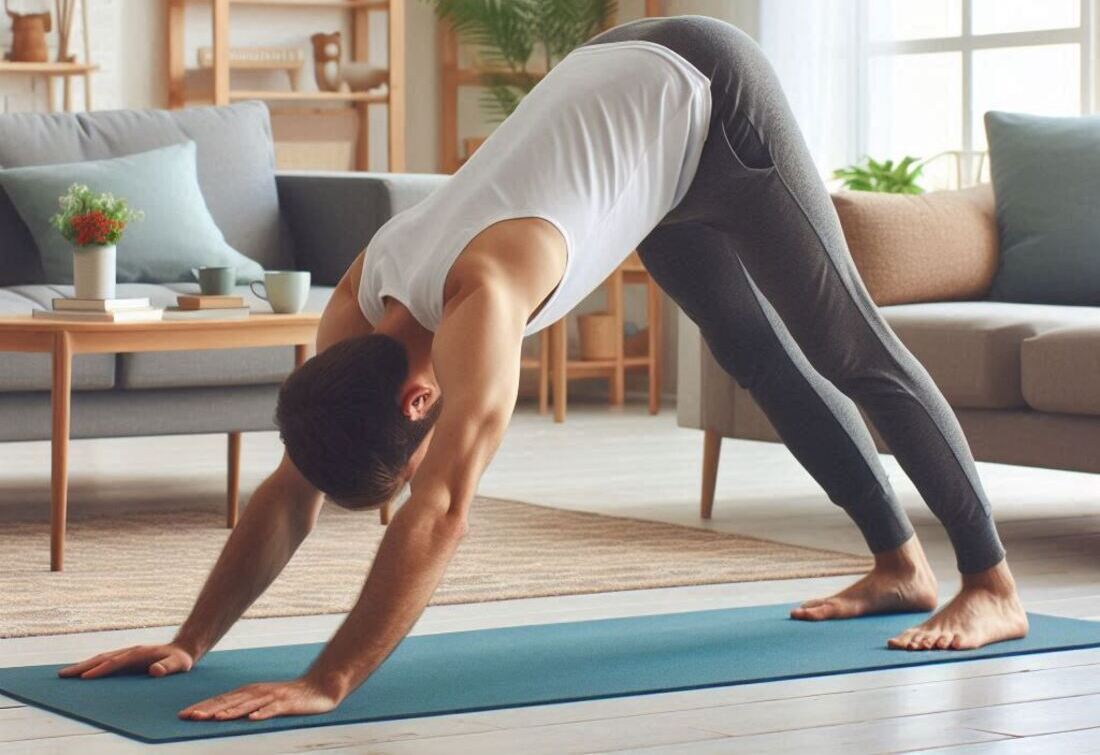
Tight hip flexors can wreak havoc on your daily life, limiting mobility and contributing to pain.
But fear not, fellow yogis (and yoga-curious)!
Yoga offers a treasure trove of poses specifically designed to target tight hip flexors and improve hip mobility.
By incorporating these poses into your practice, you can:
- Increase Flexibility: Regularly practicing yoga hip openers can lengthen and loosen tight hip flexors, improving your overall range of motion.
- Reduce Pain: Improved hip mobility can alleviate pain in your lower back, knees, and even improve your posture.
- Enhance Movement: Looser hip flexors make everyday activities like bending over, squatting, and walking feel smoother and more effortless.
Here we will delve into the world of yoga for hips, exploring the benefits of improved hip mobility and showcasing effective poses to target tight hip flexors.
We’ll provide a step-by-step guide for each pose, suitable for beginners and experienced yogis alike.
Get ready to unlock your hips and experience the freedom of movement yoga offers!
Key Takeaways
- Tight hip flexors can significantly limit mobility and contribute to pain in your lower back, knees, and affect your posture.
- Yoga offers a variety of effective poses to target tight hip flexors and improve hip mobility.
- This blog provides a step-by-step guide for beginner-friendly yoga poses that can be easily incorporated into your routine.
- Consistency is key! Regularly practicing these poses will lead to noticeable improvements in your hip flexibility and overall well-being.
- Consult a qualified yoga instructor for personalized guidance and modifications if needed.
The Importance of Hip Mobility in Yoga (and Beyond!)
Our hip flexors play a crucial role in various yoga poses.
They help us lift our legs, bend forward, and maintain proper alignment.
When these muscles become tight, it can restrict our movement and hinder our ability to perform yoga poses correctly.
But the benefits of improved hip mobility extend beyond the yoga mat.
Looser hip flexors can:
- Enhance athletic performance: Improved hip mobility can benefit athletes in various sports by increasing their range of motion and power.
- Improve posture: Tight hip flexors can pull on your lower back, leading to poor posture. Yoga hip openers can help correct this and promote proper spinal alignment.
- Reduce risk of injury: Tight hip flexors can contribute to muscle imbalances and injuries. Improving hip mobility can help prevent these issues.
Yoga Poses for Happy Hips: A Step-by-Step Guide
Here are some beginner-friendly yoga poses specifically designed to target tight hip flexors:
1. Downward-Facing Dog (Adho Mukha Svanasana)
- Benefits: Stretches hamstrings, calves, and hip flexors; strengthens shoulders and core.
- How-to:
- Begin on your hands and knees with your hands shoulder-width apart and knees hip-width apart.
- Push your hips back and straighten your legs as much as possible, forming an inverted “V” shape.
- Keep your heels pressing towards the ground (or as close as comfortable), and gaze between your legs.
- Hold for 5-10 breaths.
2. Low Lunge (Anjaneyasana)
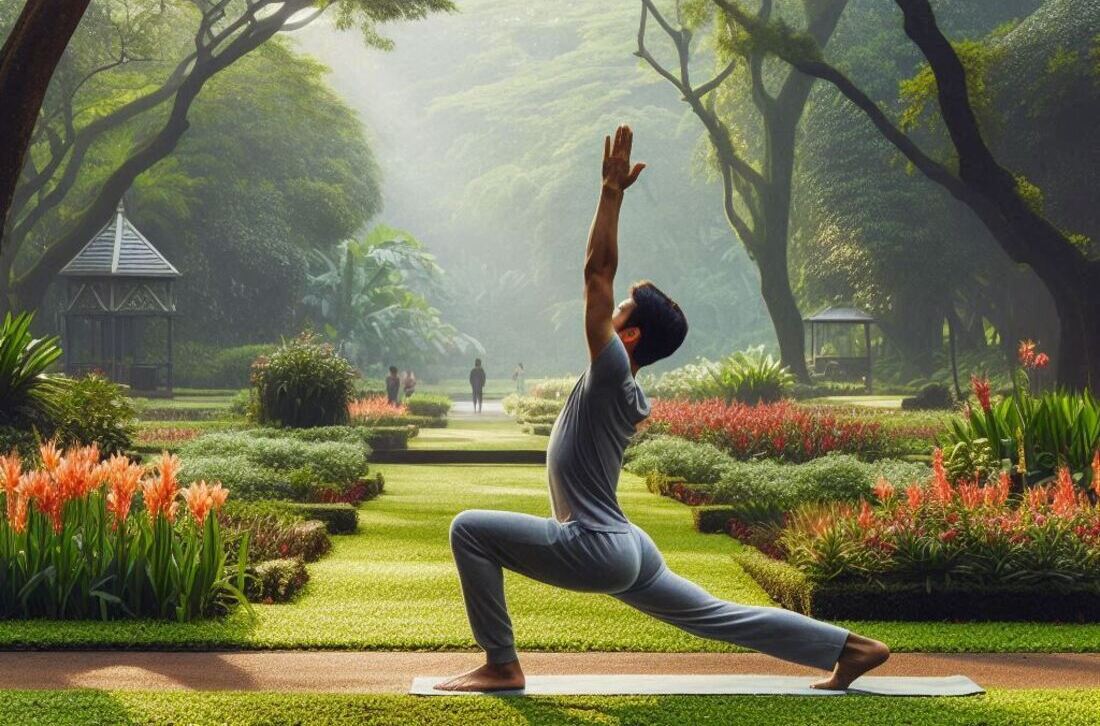
- Benefits: Stretches hip flexors and quadriceps; strengthens core and glutes.
- How-to:
- Begin in a Downward-Facing Dog pose.
- Step one foot forward between your hands, keeping your back leg straight and heel pressing towards the ground.
- Lower your back knee towards the mat, keeping your hips square.
- Sink deeper into the lunge with each exhale.
- Hold for 5-10 breaths on each side.
3. Pigeon Pose (Eka Pada Rajakapotasana)
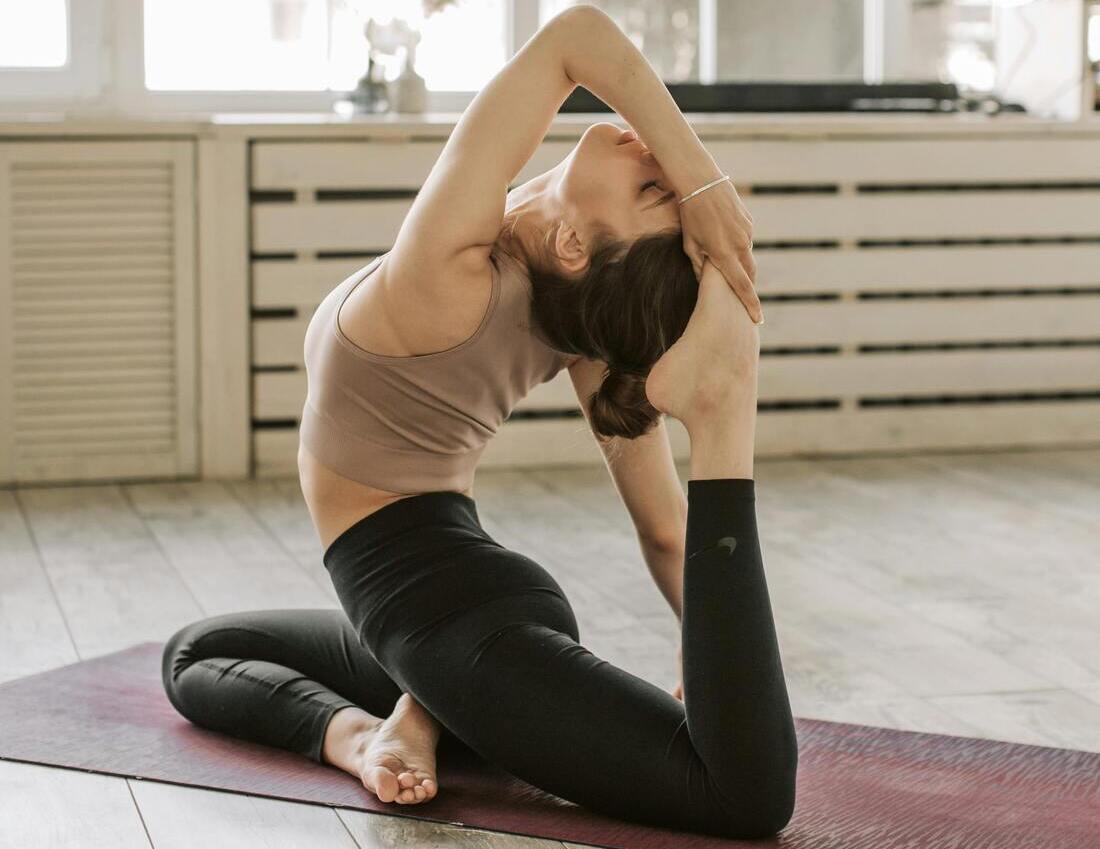
- Benefits: Deep stretch for hip flexors and glutes.
- How-to:
- Start in a Downward-Facing Dog pose.
- Slide one knee forward between your hands and lower your hips towards the ground.
- Extend your other leg straight back, keeping your foot flexed.
- Gently lean forward, keeping your torso upright, and feel the stretch in your front hip flexor.
- Hold for 5-10 breaths on each side.
4. Lizard Pose (Utthan Pristhasana)
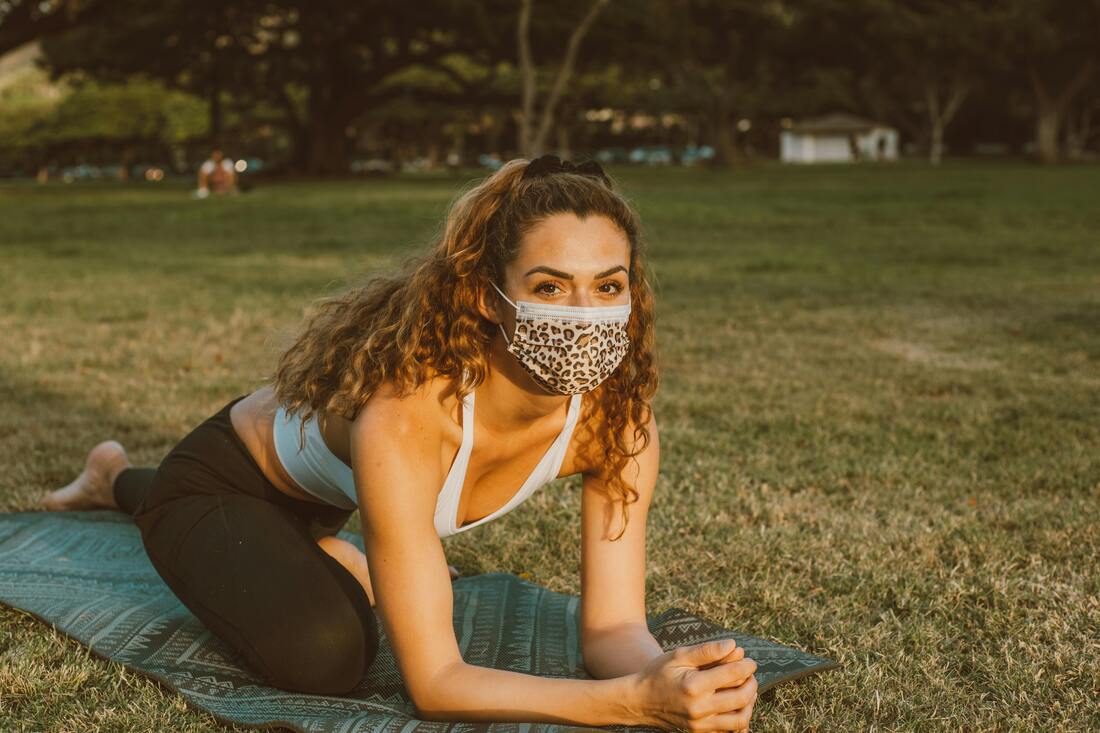
- Benefits: Stretches hip flexors, quadriceps, and groins; strengthens core and shoulders.
- How-to:
- Begin in a Downward-Facing Dog pose.
- Step one foot forward between your hands, keeping your hips square and back leg straight.
- Lower your forearms to the mat in front of your front foot, stacking your shoulders over your wrists.
- Slide your back knee towards the ground, keeping your hips lifted as much as possible.
- Gaze forward or slightly down.
- Hold for 5-10 breaths on each side.
5. Happy Baby Pose (Ananda Balasana)
- Benefits: Gentle stretch for hip flexors and inner thighs; relaxes the lower back.
- How-to:
- Lie on your back with your knees bent and feet flat on the floor.
- Bring your knees towards your chest and grasp the outer sides of your feet with your hands.
- Gently rock your hips side to side or sway back and forth for a deeper stretch.
- Hold for 5-10 breaths.
Tips for Effective Yoga Practice
- Listen to your body: Don’t push yourself beyond your limits. Modify poses as needed and avoid any pain.
- Focus on your breath: Breathe deeply and evenly throughout each pose.
- Hold poses with integrity: Maintain proper alignment in each pose, even if you can’t go as deep as others.
- Be patient and consistent: Regular yoga practice is key to seeing improvements in your hip flexibility.
Yoga Modifications for Beginners
- Use props: Blocks, straps, and bolsters can help you achieve proper alignment and deepen the stretches in certain poses.
- Focus on proper alignment: Don’t force yourself into a pose if it feels uncomfortable. Focus on maintaining a safe and aligned position.
- Start with shorter holds: As your flexibility improves, you can gradually increase the duration you hold each pose.
Safety Considerations
If you have any pre-existing injuries or medical conditions, consult with your doctor or a qualified yoga instructor before practicing these poses.
Table: Benefits of Yoga for Hip Mobility
| Benefit | Description |
|---|---|
| Increased Flexibility | Yoga poses help lengthen and loosen tight hip flexors, improving overall range of motion. |
| Reduced Pain | Improved hip mobility can alleviate pain in your lower back, knees, and improve your posture. |
| Enhanced Movement | Looser hip flexors make everyday activities like bending over, squatting, and walking feel smoother and more effortless. |
| Improved Athletic Performance | Increased hip mobility can benefit athletes by improving their range of motion and power. |
| Better Posture | Yoga hip openers can help correct poor posture and promote proper spinal alignment. |
| Reduced Risk of Injury | Tight hip flexors can contribute to muscle imbalances and injuries. Improving hip mobility can help prevent these issues. |
Conclusion: Embrace Mobility with Yoga
Tight hip flexors can be a pain (literally!), but yoga offers a powerful solution.
By incorporating the poses outlined above into your practice, you can unlock your hips, improve your overall mobility, and experience the joy of moving with freedom and ease.
Remember, consistency is key!
Make yoga a regular part of your routine and witness the transformative power it has on your body and mind.

